If you want to save money, one of the most important things you need to do when shopping at the supermarket is to to look at the price per unit.
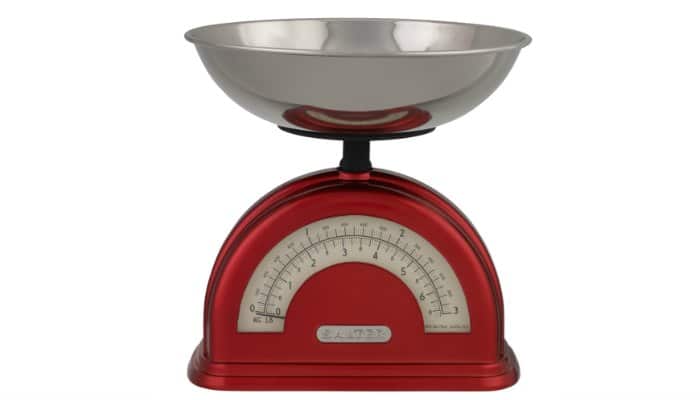
£10 sign up bonus: Earn easy cash by watching videos, playing games, and entering surveys.
Get a £10 sign up bonus when you join today.
Join Swagbucks here >>
Supermarkets have this amazing way of making you think you’re getting a bargain. Sometimes you are but sometimes you most certainly aren’t.
One of the most important things you need to do when shopping at the supermarket, while trying to squeeze the pennies as tightly as possible, is to to look at the price per unit.
May sound like hard work but you need to do it and it’s worth it.
We do the majority of our food shopping online. We do a comparison on mysupermarket.co.uk, choose the best value basket then checkout. We get enough food to last us around two weeks then top up our shops with perishable items, usually from Lidl.
Although I can normally find a good deal at Lidl, their pricing feels a little all over the place. Some of it is priced at price per kilo, others are priced at price per 100g.
You really need to be on the ball as the shops play their games to try to catch busy shoppers out. I know I dislike shopping at the best of times so when I go into a supermarket I like to run in and run out.
Take the pricing on their vegetable spread – 89p vs £1.80. Immediately, the 89p one looks cheaper but the price per unit catches my eye underneath. £1.780 vs 36p! Now the more £1.80 spread feels cheaper until you work out that per 100g one is 17.8p and the other is 36p. They do this one a number of comparable items, and usually they are right next to each other.
The Which! food prices campaign really brought to light the confusion shoppers have had when making a supermarket purchase and in December 2013 confirmed that all 10 UK supermarkets agreed to display consistent price per unit labels across similar products.
Also, out of the 10, six would also show the price per unit on promotions for multi-buys of the same item.
Work Out the Price Per Unit
It’s not easy to work it out the price per unit on the spot, especially with children pulling at your leg, but with a calculator it’s easy.
To work out whether you are getting a good deal, compared to the item sat next to it, you need to do a simple sum.
To work it out the price for 100 units, whether that be grams, litres etc:
Total price divided by total weight, then multiply by 100
Take mixed herbs for instance:
Schwartz £1.64 divided by 9g x100 = £18.22 for 100g
ASDA 0.97 divided by 30g x100 = £3.23 for 100g
ASDA Smartprice 0.25 divided by 18g x100 = £1.39 for 100g
It’s that simple! And shocking when you see the price difference between the highest and lowest brands!
Misconceptions
Bigger is Better
No – well, not always. Bigger can be better, as the price per unit comes down, even with the same brand but in some circumstances the price changes so it’s still worth checking unit price.
Take Rice Crispies from ASDA as an example.
As the packs get bigger, it starts to get bigger but the biggest is more expensive than the middle size one.
340g packet is £2.08 = 61.2p per 100g
510g packet is £2.00 = 39.2p per 100g
700g packet is £3.49 = 49.9p per 100g
(prices correct as 22 June 2014)
With a bit of colour on the pack, families will look and grab the packet thinking they are getting the best value but, it’s cheaper overall to just buy two of the next size down.
Buying multi buy packs are cheaper
No – Just because the item is on offer for 4, does not mean it’s not cheaper than buying separately.
Still looking at ASDA, they sell Heinz Bakes Beans – a staple food in a lot of households.
A single can is 68p for 415g (16.4p per 100g), a multi pack of 4 is £2.00 (12p per 100g) a multi pack of 6 is £3.50 (14p per 100g). Again the BIG family pack is not the best value.
They have now put it on offer to £3.00 so it works out at 12p per 100g and is now the same value but, as this is just an offer price, it will go back up soon.
Own branded labels are cheaper
No – Don’t always think that the store own brand is cheaper.
It really is interesting to see that the white labelled items are not always cheaper, overall, then the next brand up. Rather than just putting the own label in your basket, thinking you’re getting a bargain, it’s always worth having a quick check to see if the price per unit changes when comparable items go one offer.
This week, you can buy 8 tortilla wraps from Tesco for £1 but you can buy Mission Original wraps for exactly the same price – you get a better brand for no more money.
Food shopping tips
Do It Online
The online food comparision site mysupemarket.co.uk gives you an option to view items based on price per unit, taking away the need to work it out on a calculator. All the hard work is done for you.
Tesco, Sainsburys, Waitrose and Ocado give the option to view the items lowest to highest but that’s not the best value as you may be buying an items that looks cheaper but it is probably smaller.
ASDA don’t give you too many options all and the only products you get to see initially are the ones on offer, making you have to scroll down all the list to find the good value products.
They do all give the breakdown of the price per unit just not an easy way to view it.
Work It Out
Use a calculator while shopping. I used to worry about what people would think but I really don’t care anymore. I want to save money and I am saving money. Rather than carrying around a real calculator, I use the one on my phone so it doesn’t look as obvious anyway.
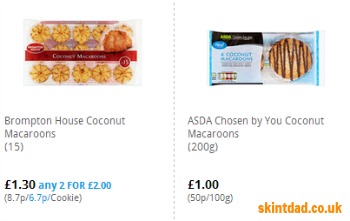
Some products are shown as price per unit and price for 100g – even for the same item. Items like toilet roll and biscuits are shown in price per item.
Macaroons are priced differently at ASDA so it’s not clear which one is better value for money. If you use the same calculation to work out the price for each macaroon, for the 15 pack it works out as 8.7p each, for the 6 pack it works out as 16.7p each – quite a difference.
Don’t Just Buy It Because it’s Cheaper
The more you buy the cheaper it gets (normally). However, when looking at fresh food, unless you plan to freeze it, you may end up wasting food and throwing your money away. Only plan to buy what you can use.
When shopping and looking at price units, you can find that you may have something different in your basket each week. As supermarkets have their price wars, their prices go up and down so one week something may be an utter bargain and the next it works out more expensive.
I don’t buy any brands in particular and I don’t shop at one supermarket. I look for the best deal that week, shop around for bargains, like with Farmfoods offers, and save some money in the process.
Penny for your thoughts: Do you pay attention to price per unit while shopping?
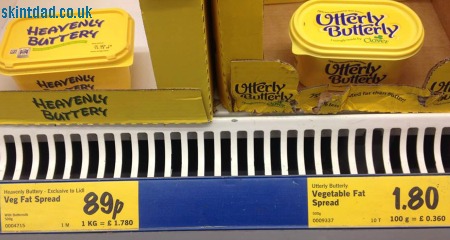
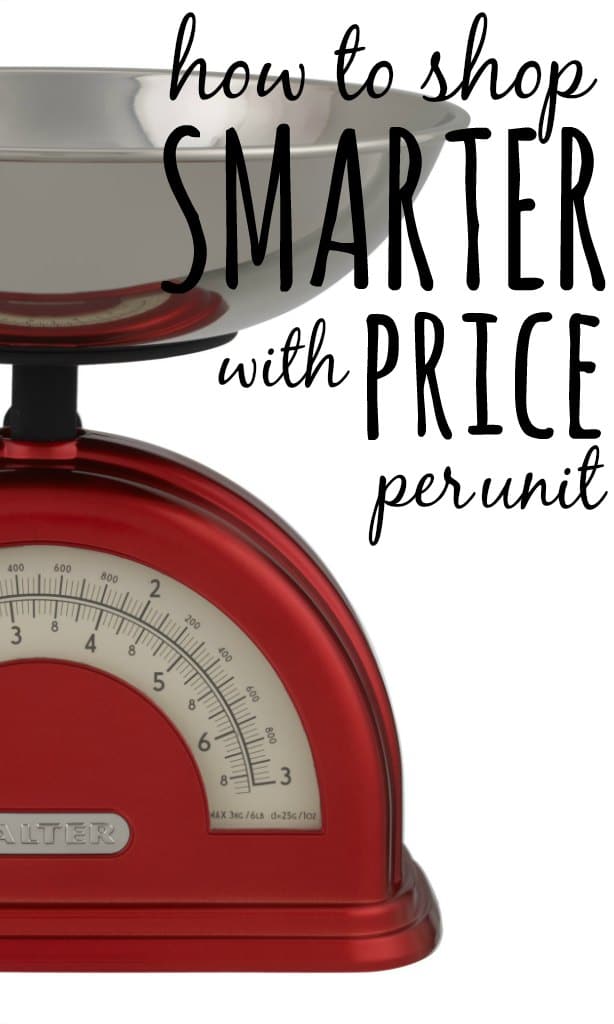
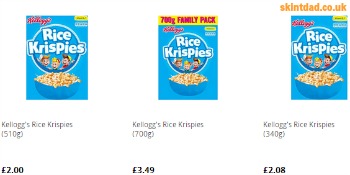

Jirina Prochazkova says
mysupermarket.com is a life saver, you can even enter and choose your items, and print out the shopping list and have it split between couple of supermarkets to make it even cheaper if you are going to go inside the shops. love it. I always look at the price per unit – it’s amazing how they try to get you x great tips x
Ricky Willis says
Totally agree. I don’t know what I’d do sometime without them. It saves so much time, and being able to switch between baskets is really helpful.
Clare Mcf says
try doing the comparison on nappies, this normally shows that bigger is not cheaper. Shocking really!
All that just to collect some crap!
Ricky Willis says
I know! I admit that I used to buy the expensive nappies. It was silly really, I was being a brand snob but the cheap ones work just as well and now I’ll never go back to the other brands.
It makes me a little annoyed knowing that I spend 7p per nappy now but used to spend around 20p per nappy! What a waste of money!
Henspeak says
If you live in rural areas there is no option but to shop in store as many of the biggies will not deliver to these areas. The prices in the main name smaller outlets are often more than the independents so its cheaper to buy non-perishables as you drive past a main supermarket and stick to local places for the rest.
I know this may seem of little relevance but Sainsbury still have their fuel 3p/litre more than their main store 8 miles away and the staff claim this is to cover the transportation costs. Yet ,milk, which comes from rural areas, going to remote farms, in massive tankers is the same price in each store. They think we are mugs.
Ricky Willis says
Excuses, excuses. A lot of people believe what they are told and the store staff may not really know the whole truth too. It’s ridiculous how much some places charge but, while they get away with it, they will continue to do so.
James says
Seeing as we have the space in our shed, we invested in a large chest freezer. We fill it over 3/4 full with meat, chips and veg for £70 at our local Farmfoods. Then we do a trip to our 24hrs local supermarket at around 8:30pm and buy bread at about 4p per loaf, and 3p per pack of rolls. These pack out the rest of the freezer. The food lasts us (a family of 4) between 3 – 4 months before we have to re-stock again. Of course, we still spend about £10 a week on the essentials like milk, etc, but overall it saved us a lot of money.